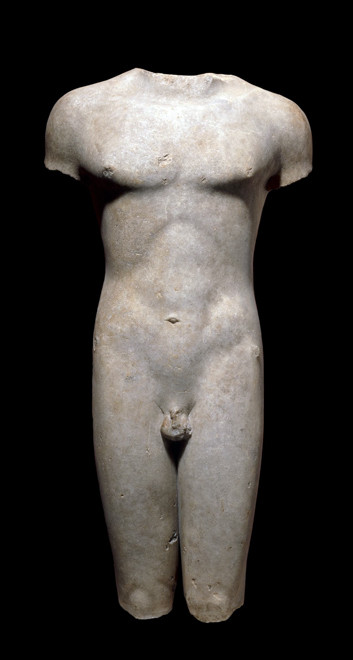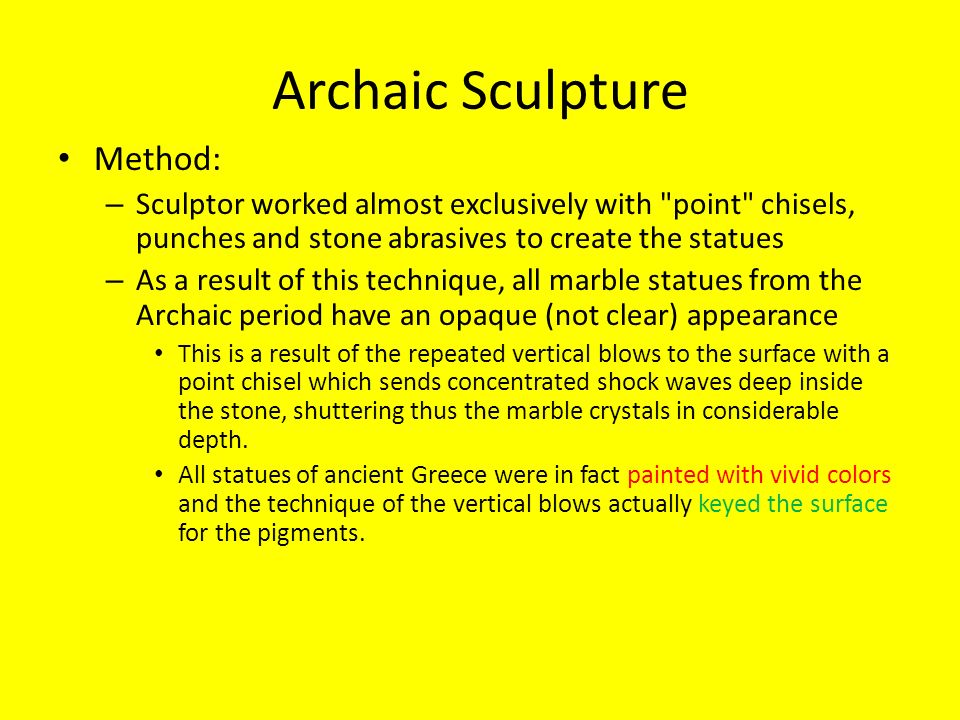The real revolution of the marble extraction techniques took place at the end of the 19th century with the invention of the helical wire and the penetrating pulley.
Archaic marble technique.
The technique is based on a 4 to 6 millimeters diameter steel wire combined with the abrasive action of silica sand and an abundant amount of water as a lubricant.
The sculpture of ancient greece is the main surviving type of fine ancient greek art as with the exception of painted ancient greek pottery almost no ancient greek painting survives.
During the republican era artists carved realistic portraits of people including political leaders military officials and historians from the chest or neck up known as busts these life sized works are celebrated for their impressively.
Kouros archaic greek statue representing a young standing male.
A striking change appears in greek art of the seventh century b c the beginning of the archaic period.
Portraits or busts and marble copies of greek bronzes.
The archaic from about 650 to 480 bc classical 480 323 and hellenistic.
During this time figures became more dynamic and defined by more organic as opposed to geometric elements.
The archaic period saw a shift in styles of pottery decoration from the repeating patterns of the geometric period through the eastern influenced orientalizing style to the more naturalistic black and red figure techniques.
Is supplanted in the seventh century by a more naturalistic style reflecting significant influence from the near east and egypt trading stations in the levant and the nile delta continuing greek.
The abstract geometric patterning that was dominant between about 1050 and 700 b c.
At all periods there were great numbers.







